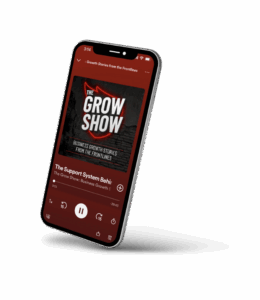Many B2B businesses struggle with having an effective lead distribution strategy. To have a sustainable sales pipeline and lead management process overall, there must be effective communication between sales and marketing teams to know who is responsible for what tasks in the B2B lead generation process.
Contents
- 1 What Is Lead Distribution?
- 2 What Are the Phases of the Lead Distribution Process?
- 3 Who Is Involved in the Lead Distribution Process?
- 4 Most Common Lead Distribution Methods
- 5 Steps to Setting Up Your Lead Distribution Process
- 5.1 Step 1. Define Lead Criteria
- 5.2 Step 2. Select Lead Distribution Method
- 5.3 Step 3. Create Workflow Standards
- 5.4 Step 4. Integrate with Lead Sources
- 5.5 Step 5. Develop Lead Scoring Models
- 5.6 Step 6. Establish Communication Protocols
- 5.7 Step 7. Monitor and Analyze (And Refine As Needed)
- 5.8 Step 8. Document Lead Distribution Procedures
- 5.9 Step 9. Scale Your Process As Needed
- 6 Best Practices for an Effective Lead Distribution Strategy
- 7 Key Takeaways
What Is Lead Distribution?
Lead distribution refers to the process of assigning or distributing potential sales leads or inquiries to sales representatives or teams within an organization. This is a crucial step in the sales and marketing process, especially in businesses that deal with a high volume of leads, such as those generated through marketing campaigns, website inquiries, or customer referrals.
The primary goal of lead distribution is to ensure that each lead is promptly and appropriately routed to the most suitable salesperson or team member who can follow up on the lead effectively. This process helps optimize sales efforts by matching leads with individuals or teams that have the right expertise, skills, or geographical proximity to best address the prospect’s needs.
Why Is Lead Distribution Important?
Lead distribution is crucial to the lead management process because it ensures that potential customers are promptly connected with the most suitable sales representatives or teams. This optimization maximizes conversion opportunities, enhances customer experience, and streamlines sales processes, ultimately driving revenue and business growth.
What Are the Phases of the Lead Distribution Process?
Phase 1: Lead Capturing and Delivering
Phase 1 of the lead distribution process involves the meticulous collection and organization of leads gathered from marketing efforts. This pivotal stage ensures that valuable lead data is accurately captured and promptly delivered to the central database or CRM system. Efficient lead capturing sets the foundation for subsequent phases, enabling effective lead distribution and conversion strategies.
Phase 2: Qualifying Leads Based on Predetermined Sales and Marketing Criteria
This phase involves scrutinizing leads to assess their potential as valuable customers. Criteria like budget, authority, need, and timeline (BANT) are used to categorize and prioritize leads. This phase streamlines the sales process, ensuring that limited resources are focused on leads most likely to convert into sales.
Phase 3: Streamlining Criteria and Standards Between Sales and Marketing Teams
Phase 3 involves aligning the definitions of lead quality and readiness between these two departments. This ensures a common understanding of what constitutes a sales-ready lead, fostering better cooperation and communication, and ultimately leading to more effective lead distribution and conversion efforts.
Phase 4: Keeping Sales Teams Involved in Lead Gen and Marketing Efforts
Last but not least, Phase 4 emphasizes collaboration between sales and marketing teams throughout the lead generation process. Sales input and feedback are incorporated into marketing strategies, ensuring that leads generated align with sales needs and preferences. This integration enhances lead quality and conversion rates.
Who Is Involved in the Lead Distribution Process?
The lead distribution process typically involves several key stakeholders and roles within an organization. Involvement in the lead distribution process includes the following departments within your business:
- Lead generation team: Your lead gen team is ultimately responsible for bridging the gap between sales and marketing departments, ensuring leads generated through marketing efforts are qualified for sales executives to pitch.
- Marketing team: The marketing team is responsible for generating leads through various channels, such as advertising, content marketing, social media, and email campaigns.
- Sales team: Sales representatives or teams are at the forefront of lead distribution. They are responsible for contacting and nurturing leads to convert them into customers. Sales professionals may also provide feedback on lead quality and effectiveness of lead generation efforts.
- Sales management: Sales managers and supervisors oversee the sales teams, ensuring that leads are properly assigned and followed up on. They may also analyze sales data to optimize lead distribution strategies.
- CRM administrators: Customer relationship management (CRM) administrators manage the CRM system where leads are stored and distributed. They set up rules and workflows for lead distribution, ensuring leads are routed to the right salespeople.
- IT and systems administrators: These professionals manage the technical infrastructure that supports lead distribution, including CRM software, lead capture tools, and integrations with other systems.
- Sales analytics and data teams: These teams analyze data related to lead generation and distribution, providing insights into lead quality, conversion rates, and the effectiveness of marketing and sales efforts.
Effective coordination and communication among these roles are essential for a successful lead distribution process, as it ensures that leads are handled efficiently and effectively, ultimately leading to higher conversion rates and revenue growth.
Most Common Lead Distribution Methods
Every company has its own approach to lead distribution. However, some are more common than others. Here are a few of the most common lead distribution efforts that marketing, sales development, and marketing teams implement:
Round Robin
The round robin lead distribution method evenly distributes leads among a group of sales representatives in a rotational fashion. Each salesperson receives leads one after the other, ensuring an equitable distribution and giving every team member an equal opportunity to engage with potential customers.
Cherry Pick
The cherry-pick lead distribution method allows sales representatives to manually select leads from a pool based on their perceived quality or interest. This method offers flexibility and empowers sales teams to prioritize and pursue leads they believe are most likely to convert, often suitable for highly experienced or specialized salespeople.
Shotgun
The shotgun lead distribution method distributes leads to multiple sales representatives simultaneously, with the expectation that the first to engage will handle the lead. It’s a fast-paced approach, suitable for high-velocity sales environments like telemarketing, where the goal is rapid response and quick conversions, often leading to competition among sales reps.
Geographic Assignment
The geographic assignment lead distribution method allocates leads based on the geographical location of potential customers. It ensures that leads are directed to sales representatives or teams situated in or responsible for specific regions. This approach is commonly used when sales territories or regional expertise play a crucial role in addressing customer needs.
Account-Based Assignment
The account-based assignment lead distribution method allocates leads to specific sales teams or representatives responsible for designated target accounts. It’s commonly used in B2B sales to ensure a personalized and focused approach for high-value accounts, aligning sales efforts with the unique needs and priorities of individual businesses or clients.
While these are a few of the most common methods for lead distribution, organizations can also establish custom rules for lead distribution based on various criteria, such as product interest, industry, or source of the lead.
Steps to Setting Up Your Lead Distribution Process
Setting up a lead distribution process involves several essential steps, including the following:
Step 1. Define Lead Criteria
Determine the criteria that will be used to qualify and prioritize leads, such as budget, authority, need, and timeline (BANT).
Step 2. Select Lead Distribution Method
Choose a lead distribution method based on your organization’s needs.
Step 3. Create Workflow Standards
Set up rules and workflows within your CRM to automate lead assignments based on the chosen distribution method.
Step 4. Integrate with Lead Sources
Ensure seamless integration between lead generation sources (e.g., website forms, marketing automation tools) and your CRM to capture and transfer leads efficiently.
Step 5. Develop Lead Scoring Models
If using lead scoring, create models that assign scores to leads based on relevant criteria, adjusting them as needed over time.
Step 6. Establish Communication Protocols
Define communication protocols between marketing and sales teams to facilitate feedback and ensure alignment.
Step 7. Monitor and Analyze (And Refine As Needed)
Continuously monitor lead distribution performance, analyzing data to optimize processes and identify areas for improvement. Based on data and feedback, refine lead distribution rules, scoring models, and workflows to improve lead-to-customer conversion rates.
Step 8. Document Lead Distribution Procedures
Document lead distribution procedures, including rules, responsibilities, and workflows, to maintain consistency and ensure scalability.
Step 9. Scale Your Process As Needed
As your organization grows, adjust and scale the lead distribution process to accommodate increased lead volume and evolving business needs.
Best Practices for an Effective Lead Distribution Strategy
Creating an effective lead distribution strategy is crucial for maximizing conversion rates and achieving sales goals. However, not every strategy starts off as effective as it could be.
Here are some lead distribution best practices to consider:
Start Simple, Expand as Needed
Starting with a simple lead distribution process allows organizations to quickly establish a functional system, reducing complexity and the potential for errors. Simplicity is also more manageable for teams to understand and implement.
As lead volumes and business needs evolve, organizations can gradually introduce more sophisticated strategies and tools, ensuring scalability and adaptability. This approach minimizes the risk of overwhelming teams and allows for smoother integration of advanced techniques as the organization matures.
Create a Feedback Loop Between Involved Teams
Creating a feedback loop among sales, marketing, and lead generation teams fosters open communication, enabling teams to share insights on lead quality and performance.
This feedback helps marketing fine-tune lead generation strategies, while sales can provide valuable input on the effectiveness of distribution methods. The loop ensures alignment between departments, enhances lead quality, and streamlines the process, ultimately boosting conversion rates and driving revenue growth.
Define Service-Level Agreements (SLAs)
Service level agreements (SLAs) in lead distribution define specific commitments between marketing and sales teams, including response times, follow-up procedures, and lead engagement standards.
These agreements ensure leads are handled promptly and effectively, enhancing the lead-to-customer conversion process while maintaining accountability and alignment between both teams.
Consistently Train Sales Development and Marketing Departments
Consistent training for the sales development and marketing departments ensures that all team members understand the lead criteria, distribution methods, and CRM tools, reducing errors and misalignment.
Training also keeps teams up-to-date with evolving strategies and technologies, enabling them to adapt to changing market dynamics. Well-informed teams can work together seamlessly, optimizing lead quality, nurturing, and conversion, resulting in a more efficient and successful lead distribution process.
Key Takeaways
By following these lead management insights, your sales, marketing, and lead generation teams have the opportunity to have a lead distribution strategy that fills those gaps, ensuring no lead falls through the cracks.
At Abstrakt, our business growth teams are responsible for helping bridge the gap between sales and marketing teams. While your marketing teams are responsible for creating and distributing content that piques the interest of users (and ideally converts them to leads), our B2B lead gen teams follow up with them to ensure they’re sales-qualified. When they are, we set up sales meetings between them and a member of your sales team.
When you’re ready to implement a B2B lead distribution process that’s proven to close more deals with qualified leads, contact the business growth experts at Abstrakt.

Madison Hendrix
Madison has worked in SEO and content writing at Abstrakt for over 5 years and has become a certified lead generation expert through her hours upon hours of research to identify the best possible strategies for companies to grow within our niche industry target audiences. An early adopter of AIO (A.I. Optimization) with many organic search accolades - she brings a unique level of expertise to Abstrakt providing helpful info to all of our core audiences.
- Madison Hendrix#molongui-disabled-link
- Madison Hendrix#molongui-disabled-link
- Madison Hendrix#molongui-disabled-link
- Madison Hendrix#molongui-disabled-link







